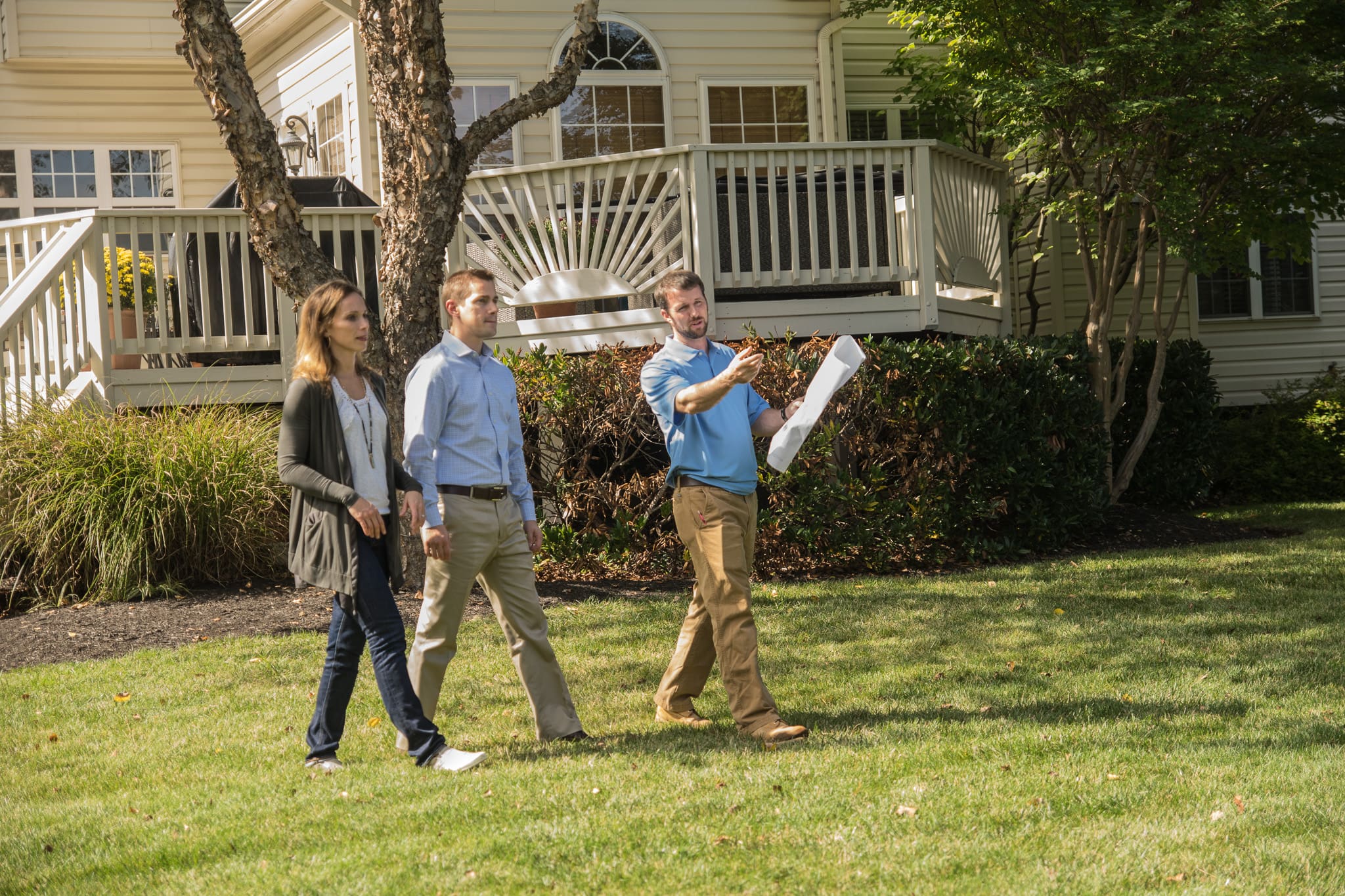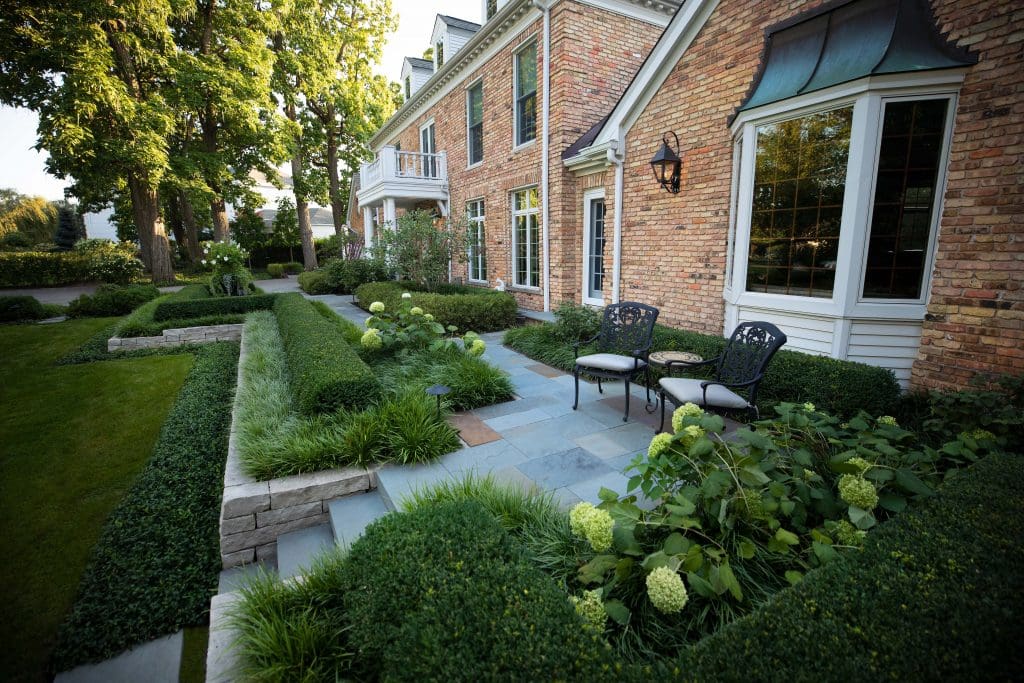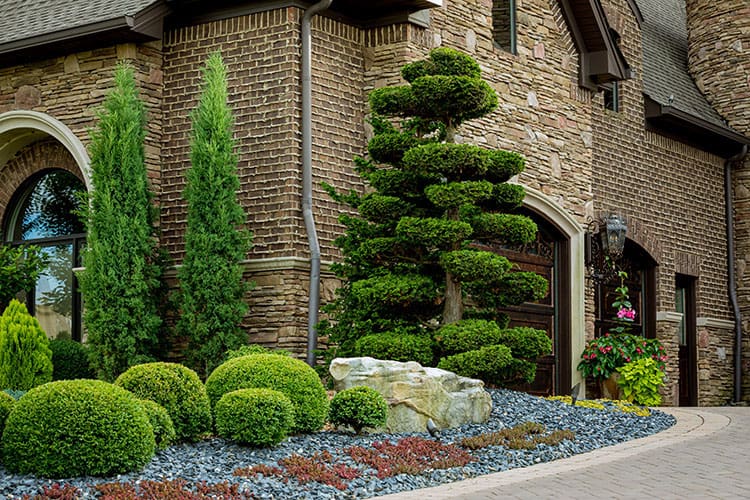
Understanding both your clients’ desires and concerns is critical, not only to close a sale but to ensure you can create a landscape design they’ll ultimately be pleased with.
Melding a couple’s different styles can be a challenge, but finding the balance between their budget and their wish list is another aspect you have to achieve.
Understanding the Power Dynamic and Budgets
It’s important to understand the power dynamic between a couple because this helps you identify who has the final say over a project. Bob Hursthouse, president of Hursthouse Landscape Architects, based in Bolingbrook, Illinois, says this is usually pretty evident by who is doing all the talking and who is glazed over. When the conversation moves to budget, it may switch and the other individual who was engaged sits back as the driver of the money leans in.
“Most of our projects, there is a dominant family member,” Hursthouse says. “It’s his garden or it’s her garden and the other one sometimes is just along for the ride, or she’s got all the ideas, but he’s controlling the purse strings or vice versa. I always prefer to meet with both members of a couple and if somebody’s being very quiet, I come back and ask questions.”

Photo: Hursthouse Landscape Architects
Mark Ables, president and CEO of Ables Landscapes, based in Hollywood, South Carolina, says it comes down to how well you can read the room.
“Picking up cues in those initial moments of a conversation is really important and I am always looking for a way to make a connection with the client,” Ables says. “I’m looking at the stickers on their cars, the books on their shelf, kids’ toys, whatever is available to help give me a read on the clients. Anything I can use to make a connection will help break down that initial wall of unfamiliarity and allows the couple to get more comfortable. And once you have a little rapport, then you begin to see how they operate. Who has the ideas, who is more budget conscious, who is driving the project, etc.”
June Hawkins, senior designer with Milosi, based in Hendersonville, Tennessee, says their designers spend a lot of time listening and making sure all the important parties have a voice. Establishing the couple’s budget early on can help prevent one of the clients from nitpicking about pricing later in the process.
“I ask for a budget prior to starting the design,” Hawkins says. “With most design-builds, the goal is to provide the client with a design that they can implement. Once we have a clear vision, if one of the clients changes direction or they can’t agree, I provide a rough budget with materials that fit the original budget. This is typically enough information for them to stay within the budget range or increase the budget because they would not be happy otherwise. As this shift is happening, work on the design plan stops until an agreement between the couple is in place. If no agreement can be reached, we have shelved projects, and then later they have re-emerged with a clear direction.”
Ables says they screen clients on the front end to make sure they can afford their services, but because landscaping comes at the end of house construction or renovation, owners are often looking to save money.
“After we give them an estimate for the full project, if they need to do any value engineering then we have a discussion about their priorities,” Ables says. “There are certain aspects that need to go in at the beginning and some things that can wait; we never lower our prices on individual work areas, we only remove them from the estimate to bring the price down.”
Engaging Both Parties
Engaging both parties isn’t just important for the budget discussion but for their design wishes as well. The last thing you want is for one of your clients to suddenly start voicing their desires when you’re already in the installation phase.
“Last-minute design changes by the clients are always a headache, so we try to avoid them as much as possible,” Ables says. “We always do a pre-construction meeting with our landscape architect, our project manager, and the clients where we walk through the plan and estimate on-site and make sure everyone is on the same page. Many times it could be six months or a year from when the design was completed until ready for construction, so things always change and if we can catch it before a shovel hits the ground, then it always works out better.”
Hawkins says when these project changes occur, she prioritizes them, especially if they’ll negatively impact the current installation or be costly to implement later.

Photo: Milosi
“To minimize these occurrences, in the initial interview, I ask the clients if they plan to be in the home long term,” she says. “If so, I suggest a phased master plan approach so that the implementation of those phases makes sense logistically, saves time, the cost can be budgeted, and a clear vision and process is provided.”
Hursthouse makes a point of illustrating ideas to clients with past project photos and confirming they understand what he’s talking about. He will ask questions to ensure both parties are participating.
“I think we as landscape professionals probably as a whole need to do a better job of listening,” Hursthouse says. “Ask the compelling question.”
If you’re designing a landscape for a family, you may not involve the clients’ children, but it’s important to discuss how everyone wants to use the space. Also, help your customers think beyond to the next phase of life as space for a swing set that is important currently can transition into something else years down the road.
“When young kids are around, there’s a lot more conversation about keeping a pool safe,” Ables says. “When kids are older, we are looking for ways to keep them home and playing outside, so that might mean a bocce court or putting green, and when kids are out of the house, sometimes it turns to ‘what can we do to get the grandkids here?’ Imagining the family using the space is key to selling a design, so we always look to create a garden that will appeal to everyone.”

